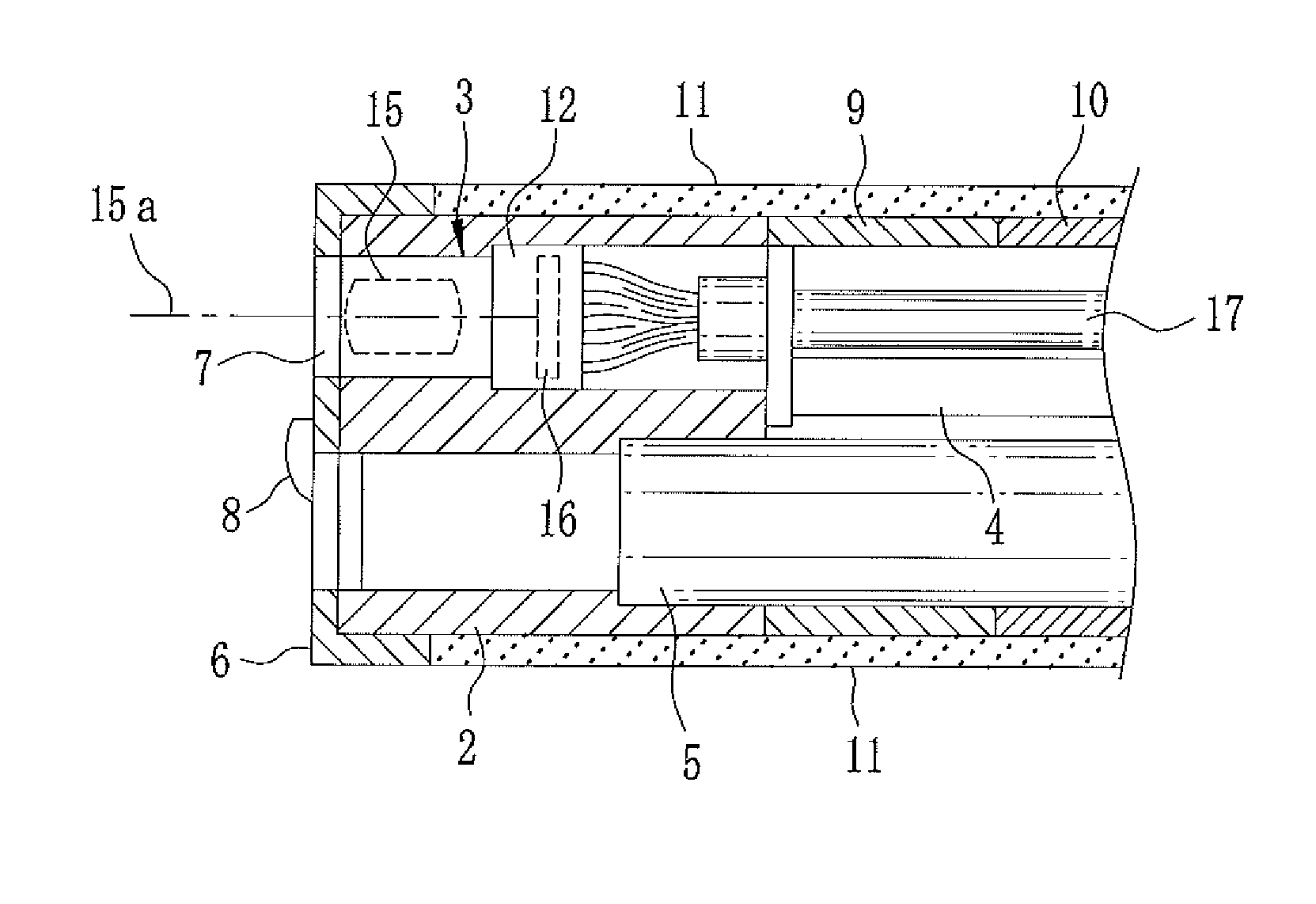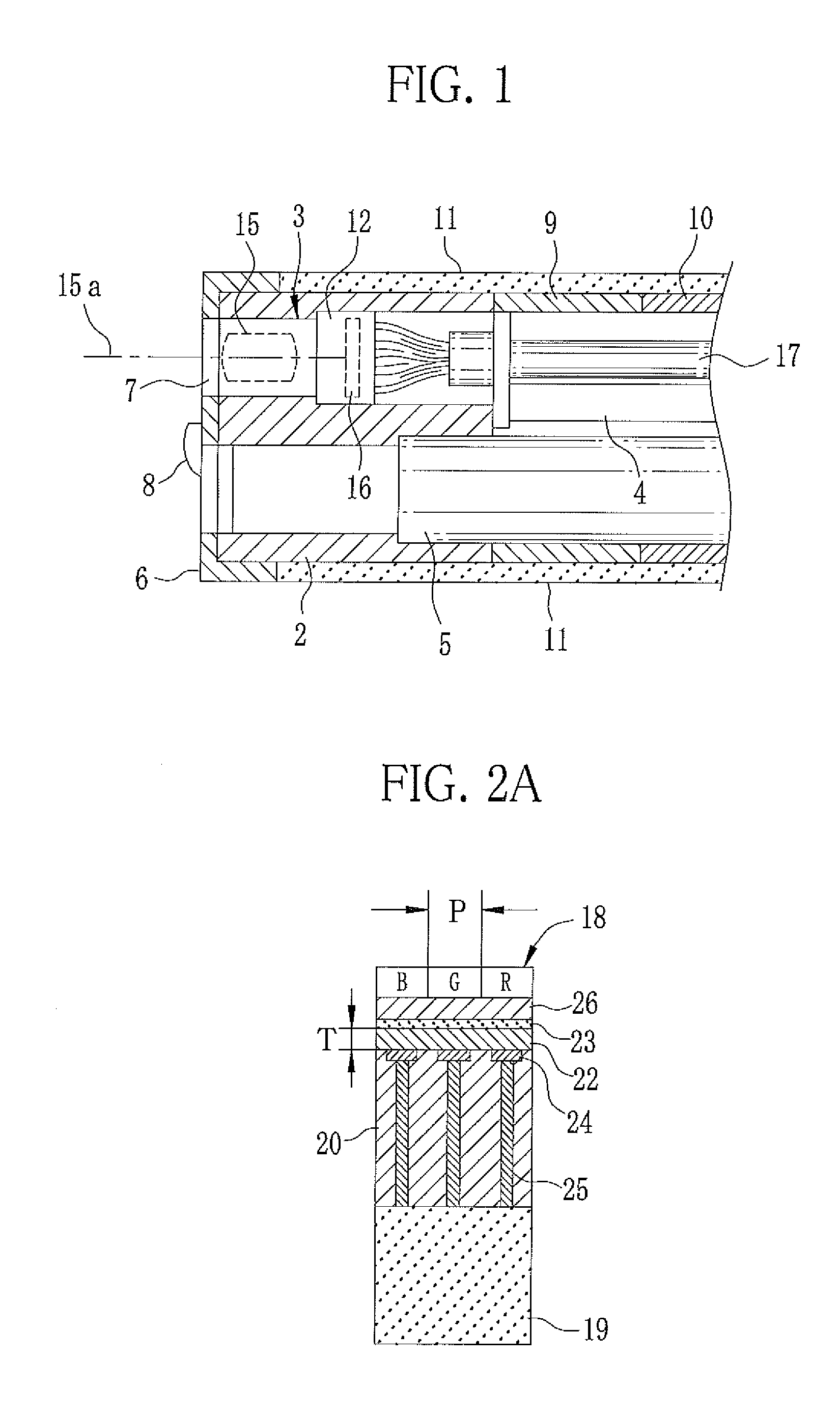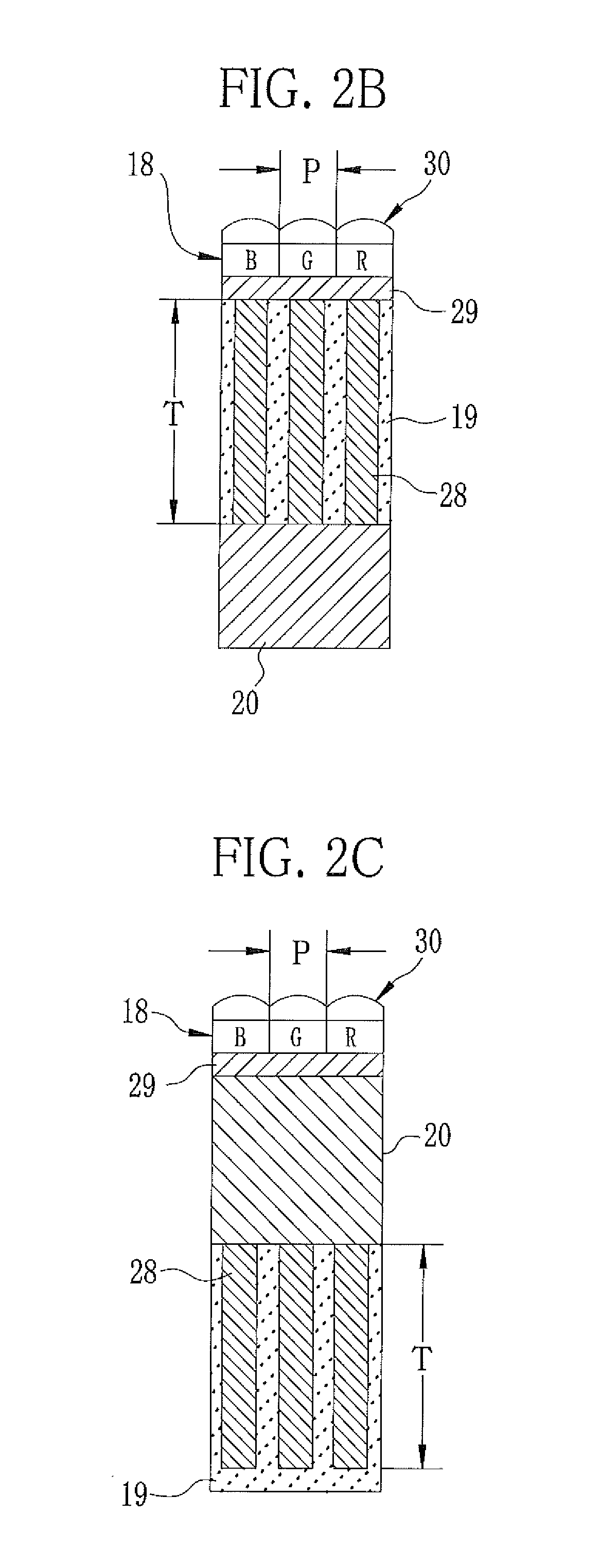Imaging optical system and imaging device
an imaging optical system and imaging device technology, applied in the field of wide angle imaging optical systems, can solve the problems of imaging optical systems that are not suitable for current endoscopes, and achieve the effects of reducing the outer diameter of imaging optical systems, reducing the photoelectric conversion efficiency of such image sensors, and reducing the chromatic aberration
- Summary
- Abstract
- Description
- Claims
- Application Information
AI Technical Summary
Benefits of technology
Problems solved by technology
Method used
Image
Examples
example 1
[0070]The imaging optical system 15 has a lens construction shown in FIG. 5. The optical system data is shown in table 1. The incident height [hF] at the front surface, the exit height [hR] on the last surface, and the maximum image height IH shown in the table 1 indicate the respective heights from the optical axis 15a as illustrated in FIG. 5 by way of example.
TABLE 1SurfaceNo.rdndνd14.0000.3001.8830040.80f1−0.62120.4650.170f20.64130.6670.6801.8348142.71f33.1224−0.6670.2601.8051825.42f4−1.4045−1.0000.000fF0.9896aperture0.030D11.410stopfR−2.67770.0000.6801.8348142.71D21.4408−0.6670.2601.8051825.429−2.9000.17010 −0.6750.3001.8830040.8011 −1.790focal length [f]1.257back length [BL]0.501lens thickness [sum]2.850total length [TL]3.351field angle [2ω](°)108.5exit angle [2δ](°)95.5incident height [hF]0.598exit height [hR]0.635maximum image height1.500[IH]value standardizedwith image height*TL2.234*hF0.399*hR0.423*|f1|0.414*sum1.900
[0071]In tables 1 to 10, “f1” denotes the focal length of...
example 2
[0075]The imaging optical system 15 has a lens construction composed of five lenses in four groups as shown in FIG. 7. The optical system data is shown in table 2. The aberration characteristics are shown in FIG. 8.
TABLE 2SurfaceNo.rdndνd13.8500.3001.8830040.80f1−0.63420.4710.170f20.64530.6670.9401.8348142.71f33.2124−1.0000.000f4−1.8055aperture0.030fF0.992stopD11.41060.0000.6801.8348142.71fR−4.1517−0.6670.2601.8051825.42D21.4408−2.9970.1709−0.6720.3001.8830040.8010 −1.405focal length [f]1.191back length [BL]0.466lens thickness [sum]2.85total length [TL]3.316field angle [2ω](°)119.6exit angle [2δ](°)93.3incident height [hF]0.665exit height [hR]0.669maximum image height1.500[IH]value standardizedwith image height*TL2.211*hF0.443*hR0.446*|f1|0.423*sum1.900
[0076]The optical system has a lens construction composed of five lenses in four groups. The third lens group G3 is composed of a doublet made up of a positive lens element G3a and a negative lens element G3b. The total length TL of t...
example 3
[0077]The imaging optical system 15 has a lens construction composed of five lenses in four groups as shown in FIG. 9. The optical system data is shown in table 3. The aberration characteristics are shown in FIG. 10.
TABLE 3SurfaceNo.rdndνd10.0000.3001.8830040.80f1−0.59320.5240.180f20.78530.8930.9501.8348142.71f31.1174−1.2720.000f4−1.0635aperture0.030fF1.827stopD11.43064.4250.6801.8348142.71fR7.5527−0.3750.2601.8051825.42D21.4308−1.1350.1609−0.6130.3001.8830040.8010 −2.173focal length [f]1.209back length [BL]0.88lens thickness [sum]2.86total length [TL]3.74field angle [2ω](°)137.6exit angle [2δ](°)81.3incident height [hF]0.597exit height [hR]0.553maximum image height1.500[IH]value standardizedwith image height*TL2.493*hF0.398*hR0.369*|f1|0.395*sum1.907
[0078]Similar to the example 2, the optical system has a lens construction composed of five lenses in four groups. The third lens group G3 is composed of a doublet made up of a positive lens element G3a and a negative lens element G3b. ...
PUM
 Login to View More
Login to View More Abstract
Description
Claims
Application Information
 Login to View More
Login to View More - R&D
- Intellectual Property
- Life Sciences
- Materials
- Tech Scout
- Unparalleled Data Quality
- Higher Quality Content
- 60% Fewer Hallucinations
Browse by: Latest US Patents, China's latest patents, Technical Efficacy Thesaurus, Application Domain, Technology Topic, Popular Technical Reports.
© 2025 PatSnap. All rights reserved.Legal|Privacy policy|Modern Slavery Act Transparency Statement|Sitemap|About US| Contact US: help@patsnap.com



